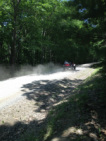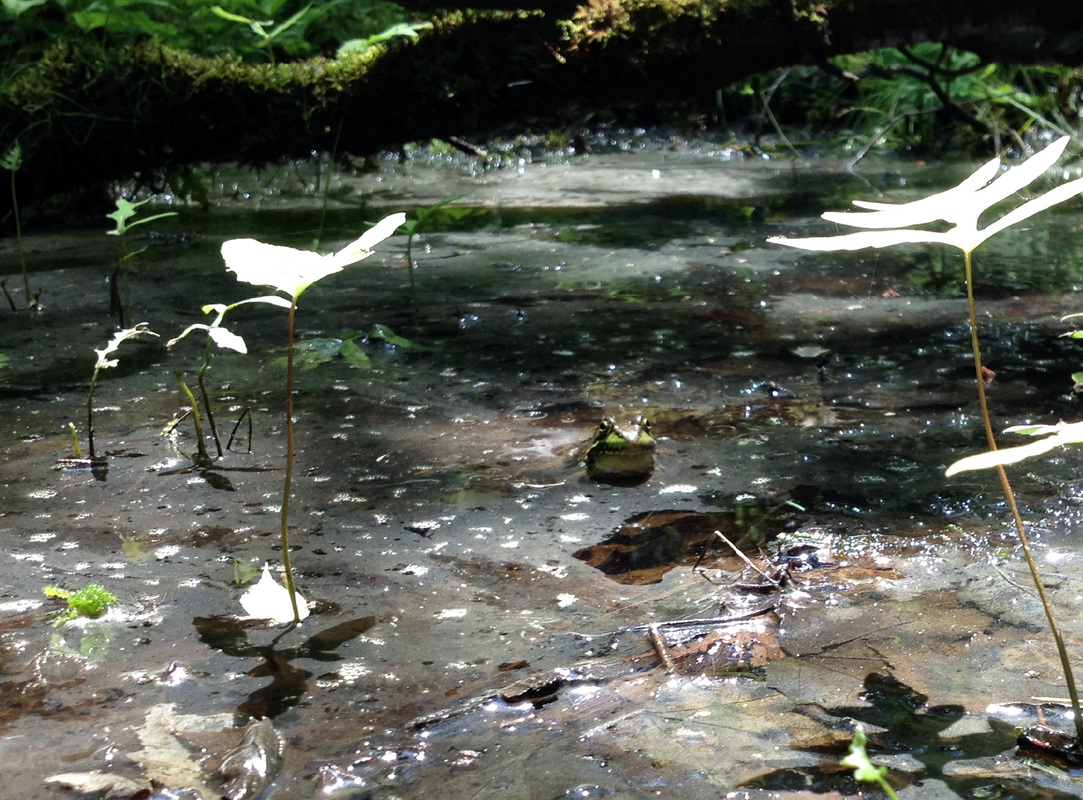Conor Gearin, Undergraduate Research Assistant, University of Maine-Orono
We are in high summer now, and as cars drive along gravel roads under the July sun, plumes of dust rise in their wakes. And when this dust settles in aquatic habitats, it can have a significant effect on both aquatic invertebrates such as caddisflies and mosquito larvae, as well as larger animals like fish and frogs. Maine’s vernal pools and their inhabitants are sensitive to this form of pollution.
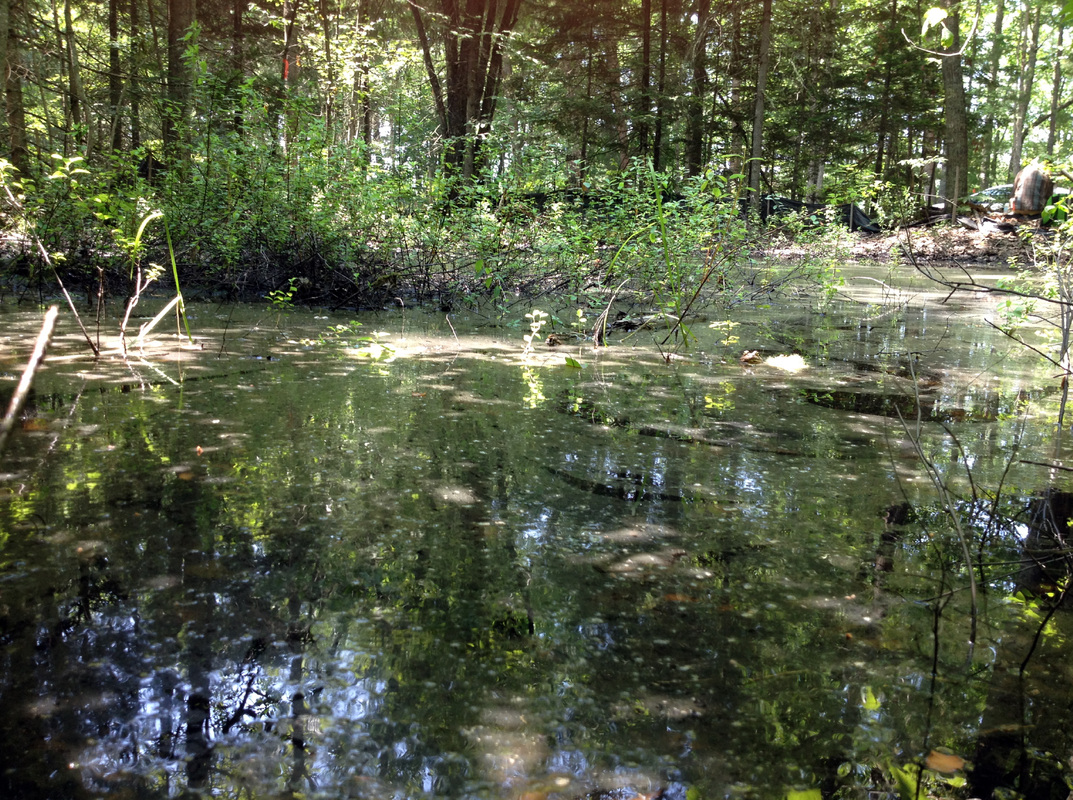
Sedimentation in aquatic systems can be a natural process. Wind and flowing water carry eroding sand, clay or silt into the water, where it eventually settles on the bottom, or benthos. Organisms in the water need natural sediment for nutrients. But when this process is sped up to unusual levels through disruptive activities like logging, mining and farming, or from less obvious sources like urban stormwater and unpaved rural roads, water quality can suffer. According to the Environmental Protection Agency, this form of pollution is the most common one affecting our streams, rivers and lakes.
Sediment pollution can affect an aquatic ecosystem at all levels of life. Sediment suspended in the water column blocks light that photosynthetic bacteria and algae need. Dennis Lemly of Wake Forest University studied an Appalachian trout stream in North Carolina and found that sediment entering streams from logging led to more acidic water and suspended particles that disrupted aquatic invertebrates’ feeding and clogged their gills. Many fish species depend on these aquatic insects for their food. A study by the University of Georgia found that streams exposed to sediment from urban areas had significantly fewer fish species than less polluted streams.
When sedimentation combines with increased levels of nutrients draining from fertilized lawns, golf courses or farm fields, the effects can be even worse. Bacteria which feed on these dissolved nutrients grow on the outer surfaces of invertebrates covered in sediment, covering them in slimy filaments.
Though most studies of sediment pollution have been in streams, we can also see it in Maine’s vernal pools. However, there are important differences to keep in mind. In quick-flowing streams, sediment remains suspended for longer, leading to lower water quality than in still or slow-moving water, where the sediment settles at the bottom more rapidly. In addition, vernal pools do not typically have fish, because most completely dry up by fall. Yet much like stream-dwelling fish, the amphibians living and breeding in vernal pools need aquatic invertebrates for food.
This frog was seen in the Dwight B. Demeritt Forest on Marsh Island in a pool near a gravel road in July, with yellowish silt depositing on the surface.
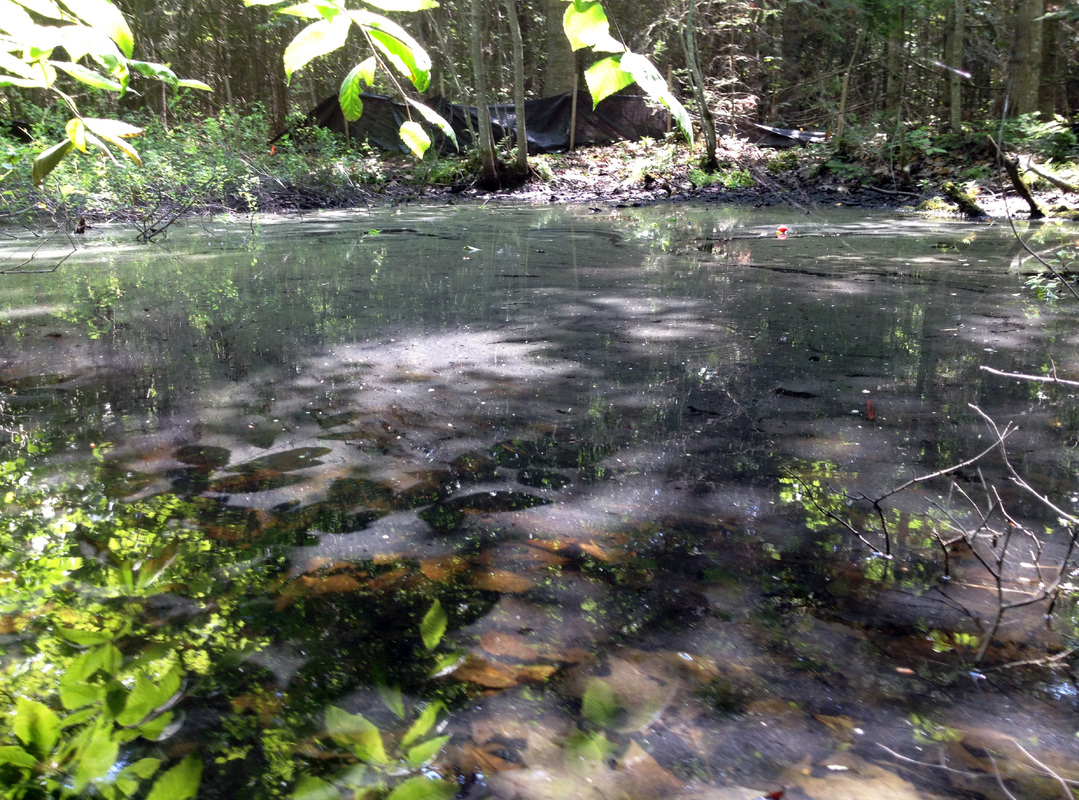
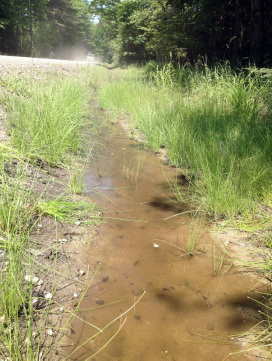 The sediment pollution we observed could lead to changes in the invertebrate community altering the food availability to organisms that eat invertebrates (such as salamander larva), limiting the sizes of their populations.
The sediment pollution we observed could lead to changes in the invertebrate community altering the food availability to organisms that eat invertebrates (such as salamander larva), limiting the sizes of their populations.
This picture shows how intense sedimentation can be when the water is directly adjacent to a road or runs beneath a bridge. The ditch was full of silt, making it a low quality habitat. Buffer zones with trees and shrubs between water and human developments can help limit this kind of pollution.
Of Pools and People seeks to understand the differences between vernal pools within urban and suburban areas and ones relatively far away from roads and people. One biologically meaningful difference could be the level of sedimentation in the pools. Figuring out how to manage our developments to limit pollution can help make Maine’s pools healthy places for our wild neighbors to live.
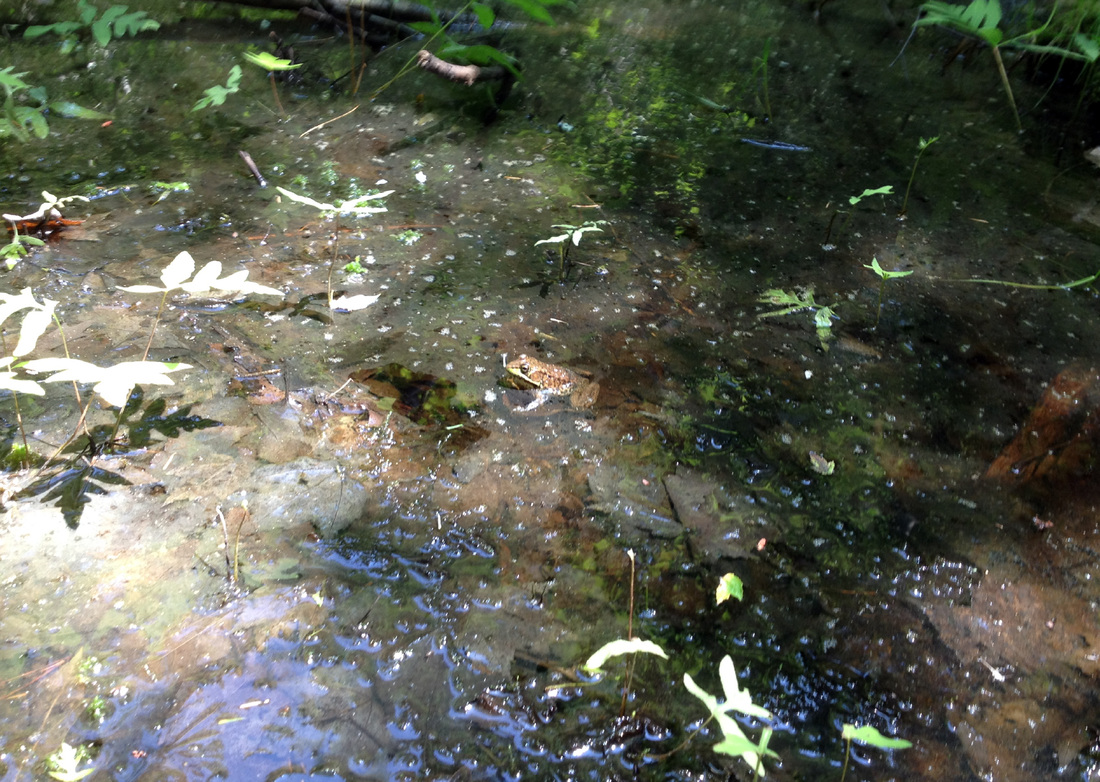
Recommended Reading
The National Institute of Water and Atmospheric Research of New Zealand provides information on sediment pollution and ways to limit its harmful effects.
<https://www.niwa.co.nz/ourscience/freshwater/tools/kaitiaki_tools/impacts/sediment>
This U.S. Environmental Protection Agency brochure discusses sediment entering watersheds through stormwater from urban areas, and ways to help prevent pollution.
<http://cfpub.epa.gov/npstbx/files/ksmo_sediment.pdf>
Bibliography
Lemly, A.D. 1982. Modification of benthic insect communities in polluted streams:
combined effects of sedimentation and nutrient enrichment. Hydrobiologia 87: 229-245.
Mid-America Regional Council. 2011. What is a watershed? Environmental Protection Agency. <http://cfpub.epa.gov/npstbx/files/ksmo_sediment.pdf>
National Institute of Water and Atmospheric Research. 2013. Sediment.
<www.niwa.co.nz>
Walters, D.M., Leigh, D.S., and Bearden, A.B. 2003. Urbanization, sedimentation, and the homogenization of fish assemblages in the Etowah River Basin, USA. Hydrobiologia 494: 5-10.

